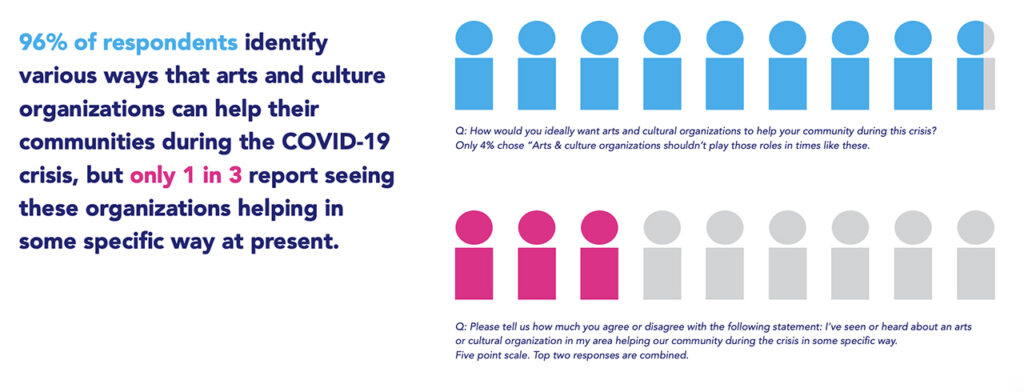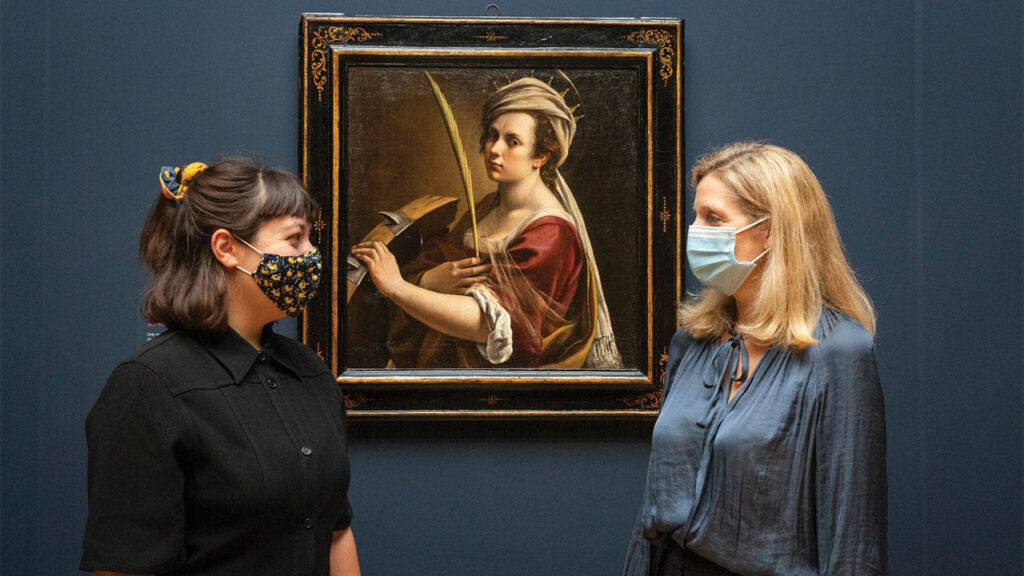A world returning to pseudo-normalcy begs reconsiderations of roles, obligations, and mission, especially among cultural centers. Their base of visitors has been scaled up with digitization and more so, is extremely online. Pre-pandemic trends exacerbated by the global shutdown — think increased digital engagement, consumption through mobile devices, and online gaming — have spawned new digital behaviors among consumers, like the expectation of directly streamed content, meaning that museums’ digital offerings might be measured against those of subscription services such as Netflix and Hulu.
Engagement doesn’t just end at the digital realm; in the wake of a global social reckoning, institutions’ roles in their wider community have been spotlit. In a recent Culture Track survey, 72 percent of respondents (out of 124k nationwide) wanted change in their cultural institutions, of which 24 percent sought support of local creators, 20 percent equity in museums’ workforces, and 18 percent a local community focus.

For museums to thrive in a post-COVID climate, then, the past year’s digital awakening needs to be considered in the larger context of community engagement, infrastructure investment, and diversified revenue streams — exactly what Elizabeth Merritt of the American Alliance of Museums and Nik Honeysett of the Balboa Park Online Collaborative urged in a recent webinar hosted by software firm Blackbaud. Below are four key takeaways from their discussion, which explored how digital solutions can enrich museums’ mission and secure their financial success.
Digital for all
Paradoxically, the supposed accessibility of art and culture in the digital age is suspended by the looming “digital divide.” “Digital should be a right,” said Honeysett, and museums can promote this right by advocating for equitable legislation and funding infrastructure while simultaneously working at a local level to provide safe in-person spaces for students and the broader community. Through lobbying for legislation that funds “high-speed internet access and lower rates” for cultural institutions, Merritt explains that museums can then establish themselves as part of the digital solution for neighborhood access.
Though current museum economic models may not uphold, say, a public library model with licensing agreements and subsidies, Merritt and Honeysett spoke as futurists. “Value and put an appropriate value on the content the museum is developing,” said Merritt, and perhaps by doing so, demonstrate that the educational and cultural services the museum provides may one day allow a similar model for the creation of digital content.

One example of a revenue-generating model: the National Gallery’s 2020 virtual tour of its blockbuster Artemisia exhibition, which cost £8 for non-members. Image: The National Gallery
Online ticketing is here to stay
Undoubtedly, one of the best museum pandemic adoptions was the switch to online ticketing, according to Merritt and Honeysett. As a result of “massive demand, a compressed engagement, and only-online” options, Honeysett explained, the digital move provided much-needed transparency to audience members about museum capacity, daily participants, and expected engagement. Existing pre-pandemic infrastructure allowed a smoother and more supportive transition to online ticketing, and both Merritt and Honeysett expect museums and cultural institutions to retain this operational aspect.
Marketing is communication
Given that digitization in museums has spotlighted online presence, it would be an easy second step to encourage cultural institutions to focus on how best to market the value of their content, especially through social media. However, Honeysett pointed out a misconception in this approach, stating that platforms such as TikTok are actually “massively instructional… for teaching how to engage communities.” Rather than entertain or market to audiences, Honeysett prioritizes community engagement and instructional videos. For example, sharing stored pieces not on show allow museums to be both economical and successful while also allowing the audience to enjoy their learning experiences.
The way out: partnerships
Let’s face it: for museums and other cultural institutions, things will get worse before they get better. The way out? Investment in digital infrastructure for long-term diversified revenue streams. With a digital presence comes access to a global audience and therefore, huge potential to scale out both presence and revenue flows. Unfortunately, a global reach also leaves museums more vulnerable to cyber attacks, necessitating trusted cyber security partners.
Museums are not only cultural institutions, but “consciously also configuring ourselves just to be part of the network that holds communities together,” said Merritt, which “makes a powerful case for public support.” In such times of uncertainty, partnership with the community allows museums to not only fulfill social obligation and financial obligations, but also prevents disruption of revenue streams to such scale in the future.



